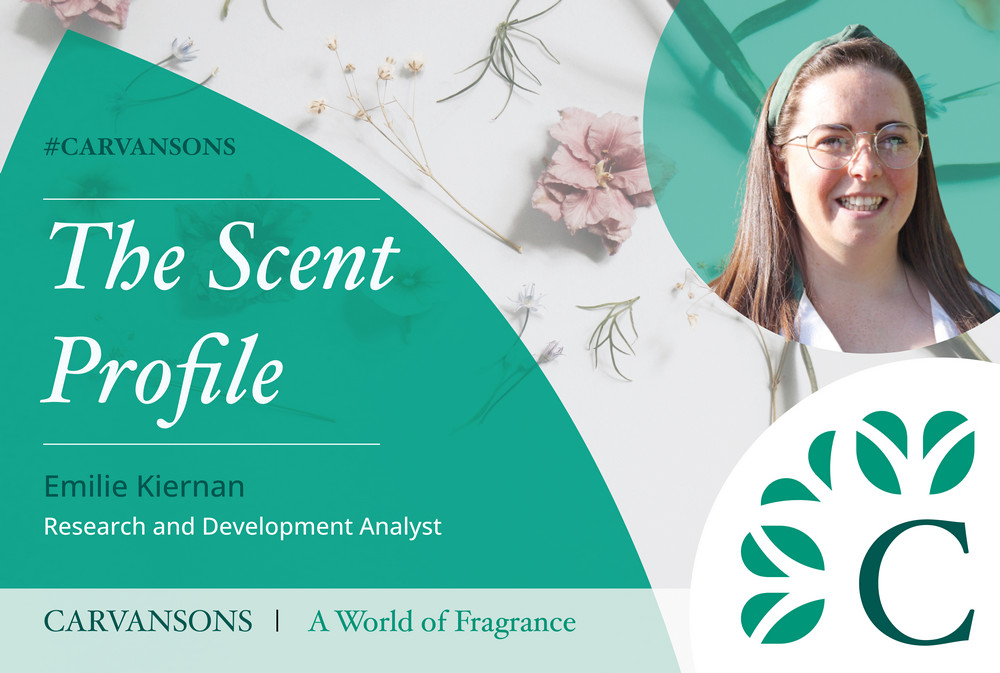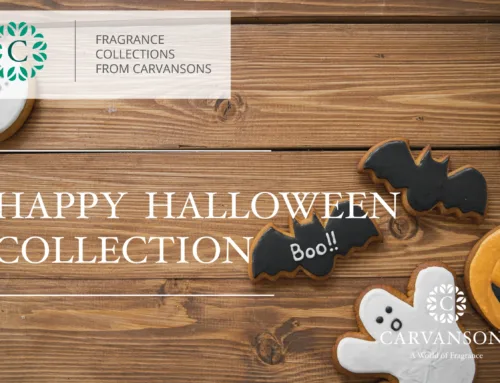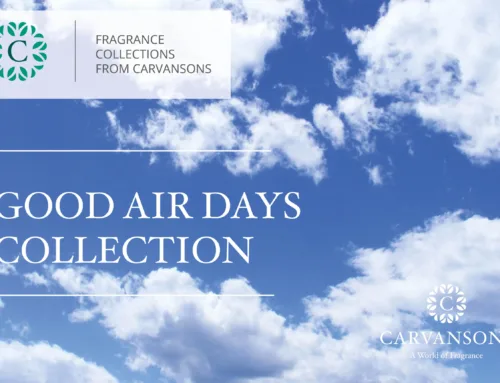There is a lot of scientific and technical knowledge that goes into the creation of new fragrances. From the technical process of isolating specific chemicals and fragrances, to the evaluation of the different elements that make up a fragrance, there is a lot to consider. In today’s Scent Profile Blog, we talk to Research Analyst Emilie and learn more about the fragrance creation, analysis and development process.
Name: Emilie Kiernan
Job Title: Research and Development Analyst
Favourite perfume: Jimmy Choo, Illicit
People would describe me as: Funny and kind
We find Emilie in her laboratory within Carvansons technical facilities. Today Emilie is working on the extraction of a scent from a wax melt.
From an early age, Emilie has always had a fascination with how things work studied forensics and toxicology whilst at University. She excelled in analytical chemistry and was keen to continue using these skills this upon graduating. Fragrance analysis is a crucial part of the fragrance manufacturing process at Carvansons and requires a high level of skill and knowledge to do effectively.
Emilie started her career working in Gas Chromatography. Gas Chromatography (GC) is an analytical technique used to separate and analyse samples that can be vaporised without thermal decomposition.
What does Emilie enjoy about her role?
“I like finding out how things work and how they are made. The hardest part of the job is deciphering the constituent parts of a fragrance. A single fragrance can be made up of hundreds of different materials. It is my job to decide if they come from a product, chemical or an essential oil. Decoding and analysing these can take up a significant amount of time. But, it is a really rewarding feeling when you’ve managed to work it all out.”
Emilie will evaluate around 30 fragrance samples per week depending upon the complexity of the sample. The difficulty of the task will vary depending upon whether it is a soap, an essential oil or something more complex.
Emilie continues;
“I think most people would be surprised at the technical processes involved in the creation of perfume. I think many people believe we just add lots of chemicals, herbs and oils together and hope that we create something that smells good. It is a much more technical science.”
Due to the need highlight any allergens that existing within a product, understanding the constituent parts of a fragrance has become even more important. These allergens can affect what sort of product a fragrance is used in. Some chemicals used in fragrance compounds are classed as allergens. They can occur as single synthetic chemicals or naturally within essential oils.
“In our fragrance analysis and development process we always follow guidelines from IFRA regarding allergens and work with our customers to ensure the fragrance is suitable for their products.”
For more information about the IFRA guidelines we follow please click here.
What makes working at Carvansons so special?
“Carvansons is all about the people. The atmosphere here is one of teamwork and combined effort. It’s great to hear when our analytical work in the lab has resulted in a brand new fragrance and has contributed towards the successful launch of a new product.”
In her spare time Emilie enjoys going out for food and watching a good boxset with her one–eyed cat, Blinky. Emilie is keen to continue developing at Carvansons and is looking forward to moving to a brand new site in the new year. She is excited for the opportunity to develop her management capabilities in the future and work on more complex projects.
Emilie Kiernan is a Research and Development Analyst for Carvansons. For more information about fragrance analysis and how we use this to support the creation of new scents and aromas, please contact us.







Leave A Comment
You must be logged in to post a comment.